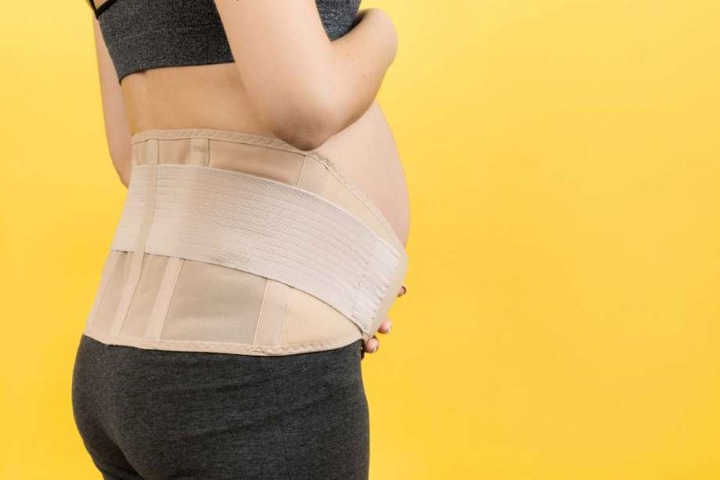Welcoming a new life into the world is a transformative experience for any mother. Alongside the joy and wonder, however, come physical changes that can leave many women yearning to regain their pre-pregnancy shape. Postpartum waist trainers have gained popularity as a potential solution to support the body during this transitional phase. Understanding what waist trainers are, their benefits, potential side effects, and essential precautions can empower new mothers to make informed decisions about their postpartum recovery journey.
In This Article:
- What Is Waist Training?
- Benefits of Using Waist Trainers After Pregnancy
- Side Effects of Post-Pregnancy Waist Trainers
- Precautions to Take While Using Postnatal Waist Trainers
What Is Waist Training?
Waist training involves the use of a specialized garment—commonly known as a waist trainer or cincher—to reshape the waistline. These garments are typically made of strong, yet flexible materials such as latex, nylon, or spandex. They are designed to compress the abdominal area and provide support to the core muscles. The goal is to achieve a slimmer waistline and potentially improve posture.
Benefits of Using Waist Trainers After Pregnancy
For many new mothers, the idea of quickly reclaiming their pre-pregnancy figure is enticing. Waist trainers are believed to offer several potential benefits during the postpartum period:
Core Support:
After childbirth, abdominal muscles can be weakened or stretched. Waist trainers provide gentle compression that may help support these muscles as they gradually regain strength.
Improved Posture:
The firm structure of waist trainers encourages better posture by supporting the lower back and abdominal muscles. This can be especially beneficial as mothers adjust to carrying and breastfeeding their newborns.
Temporary Waist Slimming:
Waist trainers compress the abdominal area, which can create a smoother appearance under clothing. Some women find this temporary slimming effect boosts their confidence during the postpartum period.
Psychological Boost:
Feeling supported physically can contribute to a positive mental outlook during the recovery phase. Waist trainers may offer psychological comfort by providing a sense of stability and control over one’s body shape.
Side Effects of Post-Pregnancy Waist Trainers
While waist trainers may offer benefits, it’s essential to be aware of potential side effects and risks:
Discomfort and Restriction:
The tight compression of waist trainers can feel uncomfortable, particularly if worn for extended periods. It may restrict movement and breathing, which can be challenging during the postpartum period when comfort and flexibility are crucial.
Digestive Issues:
Tight compression around the abdomen can affect digestion and contribute to acid reflux or discomfort after meals. This is especially relevant as the body adjusts to postpartum hormonal changes and recovering from childbirth.
Muscle Weakness:
Over-reliance on waist trainers for core support may hinder the natural strengthening of abdominal muscles. It’s important to incorporate exercises specifically designed to rebuild core strength alongside the use of waist trainers.
Skin Irritation and Allergic Reactions:
Materials used in waist trainers, such as latex or synthetic fabrics, can sometimes cause skin irritation or allergic reactions. Choosing a waist trainer made from breathable materials and wearing it over a layer of clothing can help mitigate these risks.
Precautions to Take While Using Postnatal Waist Trainers
To safely incorporate waist trainers into a postpartum recovery plan, consider the following precautions:
Consult with a Healthcare Provider:
Before using a waist trainer, especially after a cesarean section or complicated delivery, consult with your healthcare provider. They can provide personalized advice based on your individual health and recovery needs.
Gradual Introduction:
Start wearing the waist trainer for short periods initially, gradually increasing wear time as your body adjusts. Listen to your body and remove the waist trainer if you experience discomfort or pain.
Focus on Core Strengthening Exercises:
Incorporate exercises recommended by your healthcare provider or a postpartum fitness specialist to strengthen abdominal muscles. This will support long-term recovery and minimize reliance on external support.
Hydration and Nutrition:
Stay hydrated and maintain a balanced diet to support overall health and aid in postpartum recovery. Waist trainers should complement healthy lifestyle choices, not substitute them.
Monitor Skin Health:
Regularly check for signs of skin irritation or discomfort. If irritation occurs, discontinue use and consult with a healthcare provider.
Conclusion
Postpartum waist trainers can be a tool to aid in recovery by providing temporary support and enhancing confidence. However, they should be used thoughtfully and in conjunction with other healthy practices such as exercise and proper nutrition. Prioritize comfort, safety, and your overall well-being as you navigate the journey of postpartum recovery. By making informed choices and listening to your body, you can support your body’s natural healing process while embracing the changes that come with motherhood.
Sources:
- https://www.babycenter.com
- https://www.healthline.com
- https://www.webmd.com
- https://www.mayoclinic.org
- https://americanpregnancy.org













